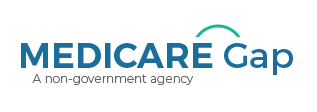Medicare Donut Hole
What Is The Medicare Donut Hole? Costs In The Coverage Gap
For most Medicare plans that cover prescription drugs (Medicare Part D), there tends to be a gap in coverage. This gap is referred to as a “donut hole” (we apologize if the term elicited excitement at the prospect of Medicare covering sugary treats). The “donut hole” is the out-of-pocket costs you will need to pay for your prescriptions after you and your insurance have paid a certain amount but before your yearly limit is reached and Medicare begins to pay your costs again (and you pay your coinsurance costs). From Medicare.gov, once you and your plan have spent $4,430 on covered drugs in 2022 ($4,660 in 2023), you are in the coverage gap. This amount may change per year.
Not everyone will reach this limit, and not everyone will pass the donut hole gap and return to receiving coverage again. The type of plan you have, your income, your medication needs, and yearly adjustments may affect this number at any given time, so it is important to familiarize yourself with your own plan. Also, if you are part of the Extra Help program, this gap will not apply to you at all.
Brand Name Drugs: Cost Breakdown
Even when this gap begins, it doesn’t mean you will be responsible for 100% of the cost of your brand name drugs. If you buy your prescriptions at the pharmacy or order them through the mail, you will only be responsible for a maximum of 25% of the cost of the drug (as long as it’s covered by your plan). There is also a dispensing fee; your plan pays 75% of the fee, and you pay 25% of the fee.
Even more good news: for brand name drugs, both the 25% you pay and 70% of the remainder of the cost of the prescription (what you and the manufacturer pay, which amounts to an average of 95% of the overall cost), goes towards your coverage gap limit. Let’s say the cost of your prescription is $100, with a $10 dispensing fee. Broken down:
| Item: | Percentage of Prescription Cost: | Percentage of Dispensing Fee Cost: | Percent of Prescription Cost Towards Gap Coverage Limit: | Percent of Dispensing Fee Cost Towards Gap Coverage Limit: | Drug Cost (Example): | Dispensing Fee (Example): | Total Amount Towards Coverage Gap Limit (Example) |
| Total | 100% | 100% | 95% | 25% | $100 | $10 | $97.50 |
| You Pay: | 25% | 25% | 25% | 25% | $25 | $2.50 | $27.50 |
| Manufacturer Pays: | 70% | 0% | 70% | 0% | $70 | $0 | $70 |
| Medicare Pays: | 5% | 75% | 0% | 0% | $5 | $7.50 | $0 |
It’s also important to note that if you have a Medicare drug plan which includes coverage in the gap, you may get a discount for the amount your plan covers. This discount on brand-name drugs applies to the remaining amount you owe.
Generic Drugs: Cost Breakdown
The amount paid towards your out-of-pocket limit when it comes to generic drugs is different than that of brand name drugs. Medicare will pay for 75% of the overall cost of generic drugs, with the remaining 25% paid by you. For these, only the amount you pay will go towards reaching your gap limit. Let’s use the example from before, with a prescription that costs $100, plus a $10 dispensing fee. Broken down:
| Item: | Percentage of Prescription Cost: | Percentage of Dispensing Fee Cost: | Percent of Prescription Cost Towards Gap Coverage Limit: | Percent of Dispensing Fee Cost Towards Gap Coverage Limit: | Drug Cost (Example): | Dispensing Fee (Example): | Total Amount Towards Coverage Gap Limit (Example) |
| Total | 100% | 100% | 25% | 25% | $100 | $10 | $25 |
| You Pay: | 25% | 25% | 25% | 25% | $25 | $2.50 | $25 |
| Medicare Pays: | 75% | 75% | 0% | 0% | $75 | $7.50 | $0 |
As with brand name drugs, if you have a Medicare drug plan which includes coverage in the gap, you may get a discount for the amount your plan covers. This discount on brand-name drugs applies to the remaining amount you owe.
Your yearly deductible, coinsurance, and copayments also count towards your coverage gap limit.
Should I Get A Discount?

If you think you are eligible for a discount, you may review your next “Explanation of Benefits”, or EOB. You can also contact your insurance to see if your prescriptions records need to be updated. You may also file for an appeal if you still feel these numbers are incorrect.
Understanding your coverage, the amounts you are responsible for, and changes to these amounts can be very confusing. Having the assistance of a licensed insurance agent can provide the help and advocacy you need to navigate your health plan, and give you the peace of mind that comes with getting the care you need at an affordable price.
